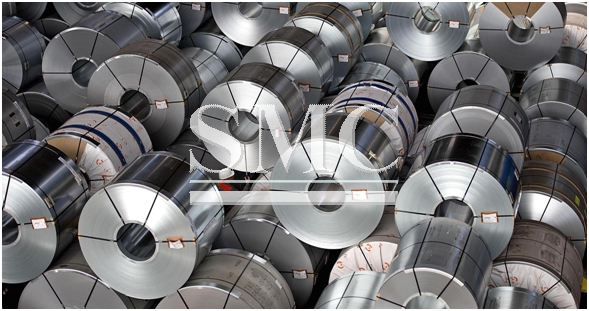
- Company overview The heart of SMC Vision & Philsophy Partnership Certifications Company culture
- Our service Design and Engineering Maintenance and Service Examine Production Line Upgrade and Transformation Storage and Logistics Processing, Trading and Distributor
- Management Our history Global responsibility Info Center
- Procurement center Internship
- Metal Steel Products Stainless Steel Products Aluminum Products Copper Products Galvanized Steel and PPGI Special Alloy Building Material
- Containers ISO Standard Container Equipment Container Storage Container Refrigerated/Reefer Container Offshore Container Container House Tank Container Container Fittings Container Trailer
- Gas Cylinder & Fire Extinguisher Cryogenic Liquid Cylinder Oxygen Gas Cylinder Storage Tank CNG Gas Cylinder LPG Gas Cylinder Hydrogen Gas Cylinder Nitrogen Gas Cylinder Industry Gas Cylinder Fire Extinguisher
- Metal Machinery Forming Machine Cutting Machine Processing Machine Bending Machine Block Machine Other Machinery Motor Spare Parts
- Mechanical Products Miscellany Mooring Equipment Marine Equipment Vehicle Industry Pressure Vessel Conveyor Belt Laser Equipment Bearing
- Electrical System Power Distribution Automation Electrical Cable Solar Power System Electric Protection System Transformer Production Line Lighting System
- Project Plastic Pipes and Pipe Fittings Fiberglass Reinforced Plastic Pontoon System
New technologies could cut the cost of steel production
Henry Bessemer was a British inventor whom was famed for developing a method to mass-produce steel. In the 1850’s the converters invented by Henry blasted air through molten iron to dismiss of impurities, making steel the commonly used material of the industrial revolution. Bessemer knew this was just the start though and in 1865 filed for a patent to cast strips of steel directly, as opposed to large ingots which would then be expansively reheated and shaped by large rolling machines.
Bessemer’s idea was to pour molten steel in between two counter-rotating water-cooled rollers which, like a mangle, would squeeze the metal into a sheet. It was an elegant idea that, by dint of having fewer steps, would save time and money. Yet it was tricky to pull off. Efforts to commercialise the process were abandoned.
That was until now. Through progress in production technology and materials science, mainly in the field of high-tech steel, the philosophy is starting to be utilized successfully. If the technology begins to be used on a large scale, it has the potential to cut energy consumption by as much as 80%. Other savings in operating and capital costs are also possible. If the new process proves to be viable, steelmaking could once again be transformed.

Continuous casting, however, still takes a lot of rolling to reduce slabs cast 80-120mm thick to the 1-2mm required by many producers, such as carmakers. Casting any thinner causes quality problems and flaws in the steel’s microstructure. One reason for that is the bottomless mould has to be oscillated to ensure molten steel does not stick to its sides. The new techniques of twin-roll and single belt-casting are, in effect, “moving moulds”—the rollers and the belt move with the steel as it cools and solidifies. This allows direct casting to a thickness of just a few millimetres, requiring only minimal rolling thereafter.
The new techniques are particularly good for making higher-value, specialist steels, says Claire Davis, a steel expert with the Warwick Manufacturing Group at the University of Warwick in Britain. Ms Davis and her team are developing new high-tech steels especially for belt casting, including advanced low-density steels that are stronger, lighter and more flexible than conventional steel.
A twin-roll process, much as Bessemer conceived, is already employed by Nucor, a giant American steelmaker. Called Castrip, it is producing steel in two of its plants. A big advantage of twin-roll and belt-casting is compactness. Nucor reckons a Castrip plant needs only 20 hectares (50 acres) and provides a good investment return from the production of only 500,000 tonnes of steel a year. A conventional steel plant, by comparison, may sprawl over 2,000 hectares and need to produce some 4m tonnes a year to turn a profit.
Other firms are licensing Castrip as well. Shagang, a large Chinese steelmaker, is replacing a less energy-efficient plant with the new technology. The numbers look compelling enough to encourage a startup, too: Albion Steel is talking to investors about building a £300m ($370m) Castrip plant in Britain. The plant would be “fed” by a low-cost mini-mill that melts scrap and produces steel for galvanising, mostly for the construction industry, says Tony Pedder, one of Albion’s founders. Mr Pedder is the chairman of Sheffield Forgemasters, an engineering company, and a former boss of British Steel (which later became Corus). Britain has a surplus of scrap but imports galvanised steel. The plant would employ only about 250 people; traditional integrated operations need a thousand or so. “We believe in the technology,” says Mr Pedder. “In our view it is past the point of being experimental.”
The techniques may end up being complementary. Their spatial efficiency and low cost would also allow production to be located closer to customers. Mr Guthrie thinks it is not inconceivable for such a plant to be integrated within a car factory. “If we can make the quality as good as the big slab-casting plants, it would change the face of the steel industry,” he says. New technologies might just blast a dose of fresh air through an old industry, much as Bessemer’s converter did 150 years ago.
Source: TheEconomist, 2017
Shanghai Metal Corporation is a trusted aluminum alloy, aluminum foil price, stainless steel price and stainless steel manufacturer, kinds of stainless steel in china.
